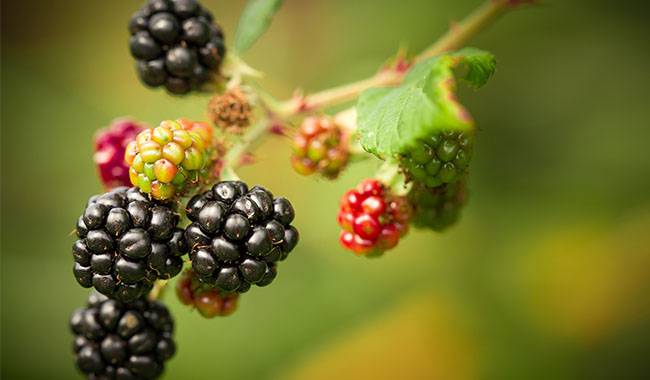
Planting and maintenance, harvesting tips for how to grow blackberries. This article will learning with you.
The blackberry has been growing naturally since ancient times. In ancient Greek treatises, it was known as a medicinal plant that could cure many diseases.
There are more than 200 species of blackberries distributed on warm continents around the globe. In natural conditions, wild blackberries occupy a moist forest niche, mostly located on riverbanks and wetlands.
INTRODUCING BLACKBERRY
Blackberries are semi-shrubby plants with soft climbing stems that grow to 3-10m (9.84-32.8foot) during the growing season and are covered with thorns and have curved tips like hooks.
This feature helps them to climb any nearby support. The stems are characterized by lavender shades of purple and some species with blue flowers.
The leaves are complex, consisting of 5-7 simple leaflets with serrated edges. The leaves are colored from dark green to gray-green, usually pubescent below, with short stiff hairs.
The flowers are radiant, five-petaled, white, pale, or deep pink. It blooms in late May and gradually forms a crop until it flowers in the fall.
The flowers are collected in racemes. The flowering time of a flower is 3-5 days. The flowers open gradually, extending the period of berry formation and ripening from late July to October (inclusive). Blackberries are harvested in stages with long fresh berries.
The fruit is a compound drupe. Berries are conditionally called. The berries are round, oblong, and conical.
They are not separated from the fruit, thus greatly extending the shelf life of the berries. The color of berries includes a variety of colors – from white, yellow, red, purple to black.
Breeders have bred more than 300 varieties and hybrids that differ in the length of the growing season, ripening period, shape and taste of the berries, resistance to diseases and pests.
NUTRITIONAL COMPOSITION OF BLACKBERRIES
The rich chemical composition of blackberries made it once jump to the top of the list in terms of medicinal properties.
Blackberries contain proteins, fats, carbohydrates, sugars (about 6% glucose, sucrose, fructose), dietary fiber.
A large number of vitamins, including “C”, “E”, “K”, “PP”. ” B ” group (including ” B1 “, ” B2 “, ” B5 “, ” B6 “, ” B6 “, ” B6 “, ” B6 “, ” B6 “, ” B6 “, ” B6 “, ” B6 “, ” B6 “, ” B6 “. ” B6″, ” B9″), the importance for health can hardly be overestimated.
A large number of elements from the chemical table are present not only in berries but also in blackberry leaves: copper, zinc, iron, magnesium, manganese, potassium, calcium, sodium, etc.
100 grams of fresh berries will provide the body with the necessary amount of nutrients and have a healing effect on diseased organs.
MEDICINAL PROPERTIES OF BLACKBERRIES
Blackberries have the unique property of restoring the body after injuries, major surgical operations.
The berries help to normalize hemoglobin and metabolism after an illness. Regular consumption of tea with blackberry leaves will lower blood pressure, strengthen blood vessels and cleanse “plaque”.
The miracle berry will help with genitourinary disorders, inflammation of the gallbladder.
Ancient healers believed that blackberries could cure gout, arthritis, help stop bleeding and treat tumors.
Blackberries have antioxidant properties that can slow down the onset of aging in the body.
GROWING BLACKBERRIES
The most difficult thing when growing blackberries is choosing a place to plant them.
It grows in one place for more than 15 to 20 years. It has time to “wander” into the middle of the plot with the help of the rhizome.
It doesn’t make sense to allocate separate plots for blackberries (such as raspberries) if you are not dealing exclusively with this crop. If blackberries are planted in separate areas, it is recommended to focus on other varieties that will not form root growth.
The second (pleasant) difficulty is choosing a variety. It should tolerate frosts in cold areas well, form medium-length aerial shoots without forming or forming a limited number of root shoots, and be fertile.
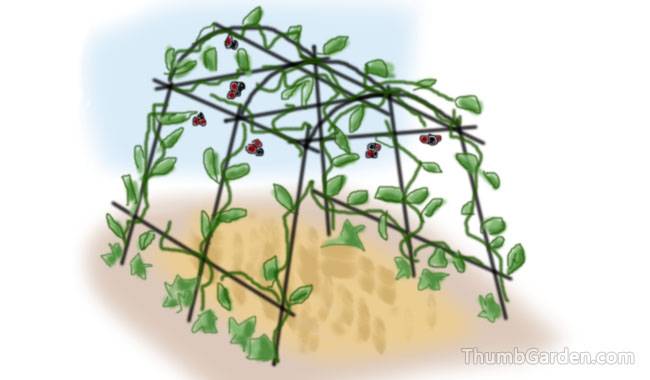
SITE SELECTION AND LAND PREPARATION
It is most convenient to place blackberries along a fence or auxiliary building in a windy location. Light winds are necessary for pollination. Blackberries are a self-fertile crop and do not require pollinating plants, but a breeze is necessary so that the bees are not disturbed.
This culture does not require special lighting and produces good fruit in both illuminated areas and in shade.
In the latter case, it becomes smaller and loses its fruit flavor with the passage of time. Tricky and thorny varieties are excellent protection against unwanted visitors.
In all regions, spring is considered the best time to sow, while in the south, fall sowing is best. Not harsh on the soil.
Planting is done in a planting pit corresponding to the size of the root system. Prepare a mixture of 0.3-0.5 buckets of humus, 100 g of phosphate nitrate or phosphorus-potassium fertilizer, 80 and 40 g, respectively.
Other doses and proportions can be used. Fertilization will be a good start and will not require any additional fertilization in the next 3-4 years.
The soil at the bottom of the planting pit is well mixed with humus and half dose of mineral fertilizer.
They put it in the middle, buried it in the ground, and mix the other half of the fertilizer standard.
It is better to compact it in order to better bind the roots to the soil. Attention! They water the land a few days after. Within 3-5 days, depending on the dryness of the soil.
Plug roots and root bushes are placed in root solution 10-15 hours before planting and can be put directly into the water.
The planting pits are distributed between 0.8-1.0m (2.62-3.28foot) depending on the growth capacity of the species.
BLACKBERRY CARE
Watering
First-year watering is crucial for better root development. During the growing season, water 3-4 times.
In the following years – only when necessary. In dry weather, watering during flowering and harvest is recommended. In humid summers, blackberries do not need watering.
To improve air exchange, it is necessary to relax, especially if the soil is heavy or dense.
Fertilization
No fertilize throughout the season. Before leaving in autumn, in winter or spring you can make black bread every 3-4 years, the birds are marked with mortar or 2-3 cups of ash crumbs (under loose bushes) and every 2-3 years (alternating with organic matter) phosphorus and potassium or compound fertilizer (nitrophosphates, etc.) in the range of 100-120 grams.
How to prune
As a biennial crop, blackberries need to be pruned once a year. The bushes are the new shoots of the year.
In the fall, they must be completely removed the bushes. Blackberries will bloom and grow into a crop next year. In order to limit the overgrowth of bushes and get a high yield every year, the following system of pruning blackberries can be proposed.
- The first pruning is done in early spring before the bud swelling. Sanitary pruning is done by removing inward growing, dry, fine curves. Each adult bush has 8-9 healthy buds. Remove the rest of the trivial food during the warm season to avoid wasting nutrients during unnecessary stem development.
- fixing. It is done at the beginning of summer when the currently growing stems will grow. Shortening them by 15-20 cm (5.9-7.87inch), pinching promotes branching and thus increases the number of fruit-bearing stems in the coming year.
- These stems will be pruned again in the second half of the summer. The full-grown main branches are shortened to 50-60 cm (19.6-23.6inch) and the lateral branches are shortened by 1/3-1/4 of their length. next year, they will greatly increase the yield of the shrub. Fertile buds are not moving. They constitute the harvest and will be cut roots in the fall.
- the last pruning is done in the autumn after the harvest. Remove the fruit stalks. If the vigorous growth resumes at this time, the juvenile growth will be shortened. Fragile, diseased, damaged stems from the bush are removed for sanitary purposes. Leave the tender parts until spring. If not needed, you can cut off or leave 1-3 sturdy branches for crown development.
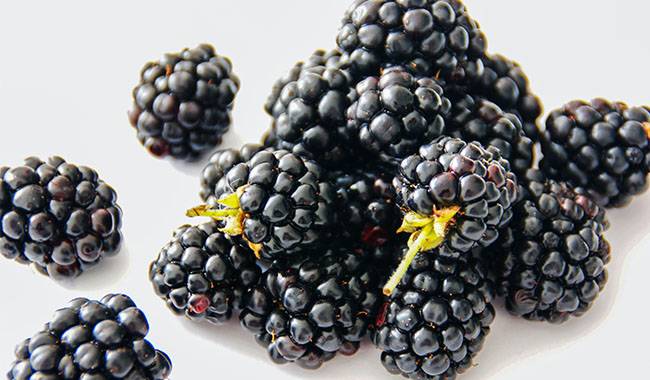
SEED PROPAGATION OF BLACKBERRIES
When propagated by seed, blackberry seedlings retain the unique characteristics of the parent plant. The seeds are stratified before sowing in a greenhouse or other facility. 4 leaves develop and then the seedlings are planted in a permanent location.
NUTRITIONAL PROPAGATION OF BLACKBERRIES
Layers
When propagating by stratification, they gently pin the tips of the shoots or young shoots into shallow troughs. Cover them with soil.
During the warm season, they are watered and fed with a solution of nitrophenols or Kemira. The plugs root after a month, but must be separated from their parents and transplanted to a permanent location the following spring.
Plugging
Plugging in fall, we dig up the bush. The 2-3-year-old roots are separated, cut into separated plugs of about 6-8cm (2.36-3.14inch), and stored in a cool place in wet sand (basement, vegetable pit).
In early spring, we planted them in 15-20cm (5.9-7.87inch) deep plow trenches using the wire method and, after rooting, transferred them to their permanent growing place next year.
To propagate by green plugs in July, we cut plugs with 3-4 buds.
We treat the lower part of the plugs with roots or other stimulants and plant them in cups or pots with prepared soil.
After rooting (if the container is small), you can transplant the seedlings into a large container until spring or spring and then plant them permanently.
By dividing the bush
If it is necessary to move the blackberries to another location or to rejuvenate them, dig out the old grassy bush and divide it into sections with a sharp knife so that each section has 2-3 strong shoots.
The separated parts of the bush are immersed or left in the roots for several hours and then planted in a new place.
BLACKBERRY PESTS AND DISEASES
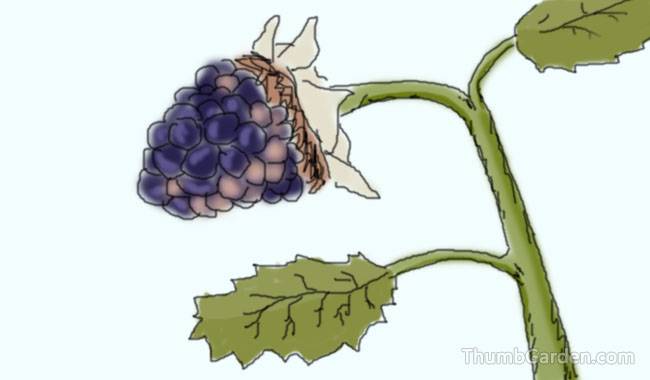
European blackberries are virtually free of pests and diseases. If purple-brown spots, skin peeling, and cracks in individual parts are found on the glass, which means that the blackberries are damaged by a fungus, spray a 1% solution of copper alum or 15 Bordeaux solution on the open kidney bushes as early as spring.
Thereafter, the disease is treated every 15-20 days with a solution of antifungal agents – phytospores, allilene, glycine -.
Chemical means of protection cannot be used in berry fields. When aphids appear, spray the weevil with methanolic bacilli and other biological products.




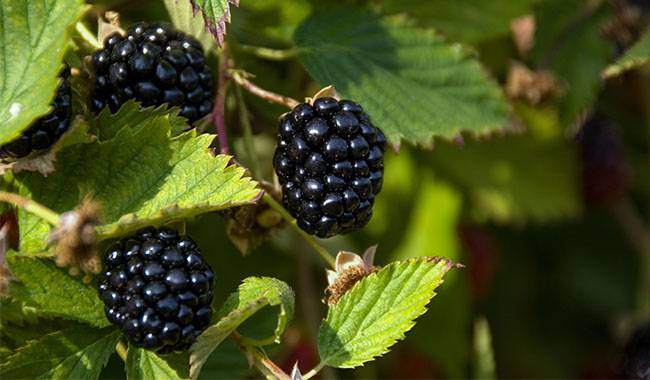
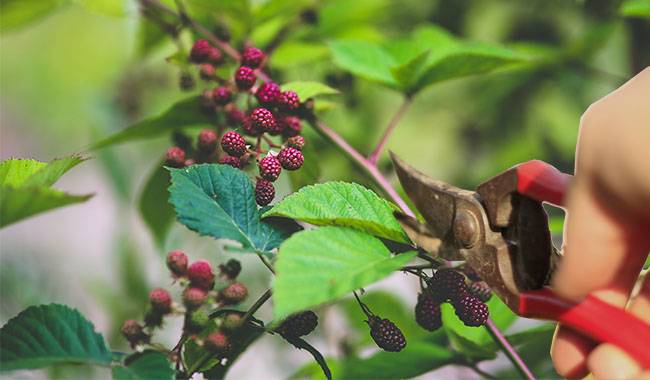
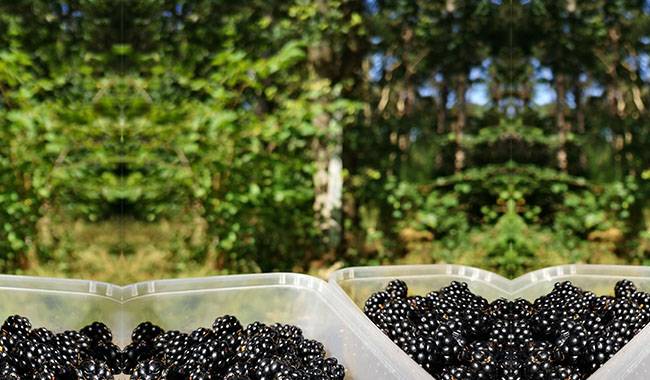
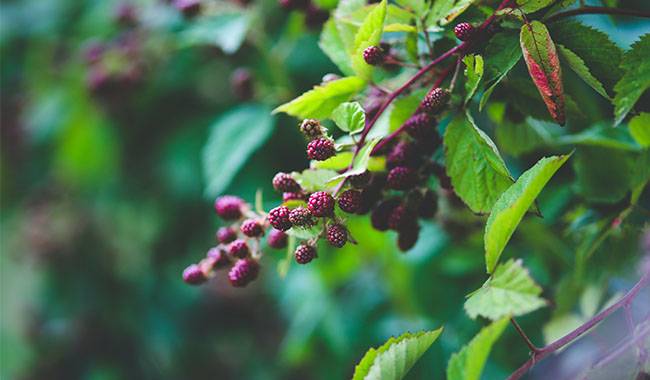
I’ve read this post and if I could I want to suggest
you some interesting things or advice. Maybe you can write next
articles referring to this article. I wish to read even more things about
it!
Thank you for the compliment.